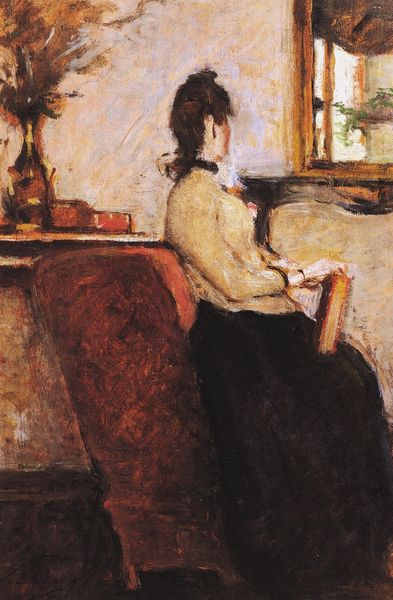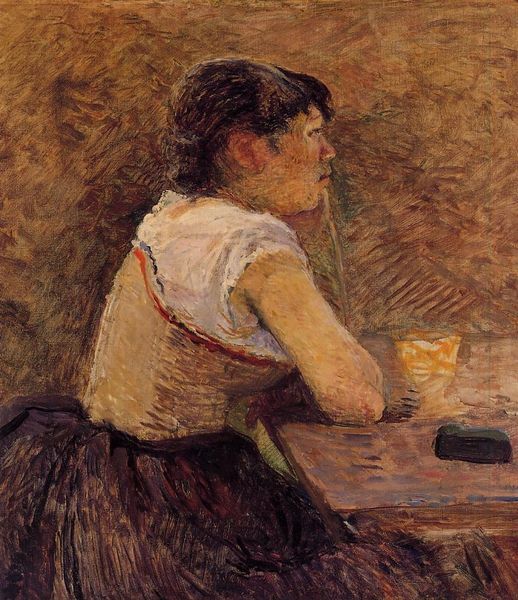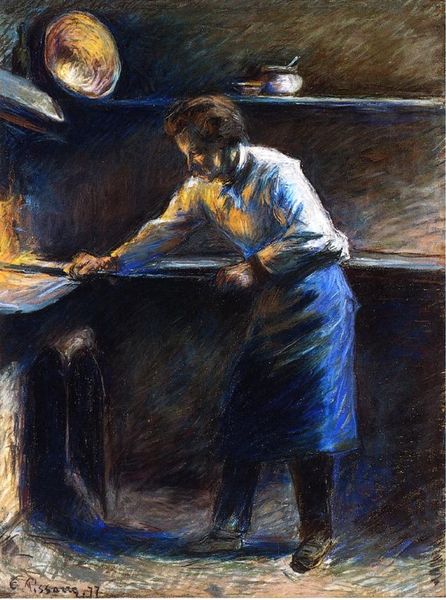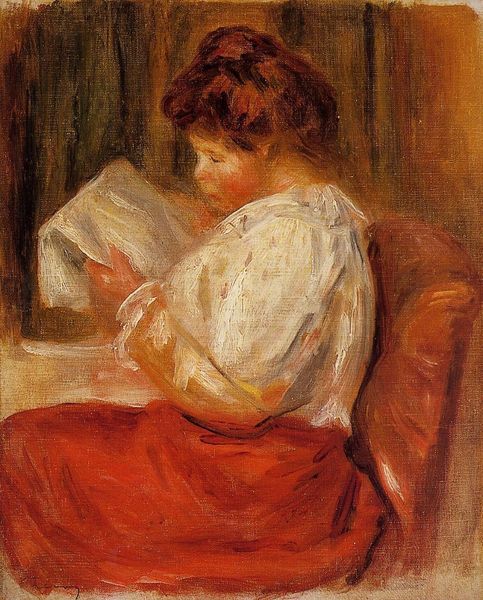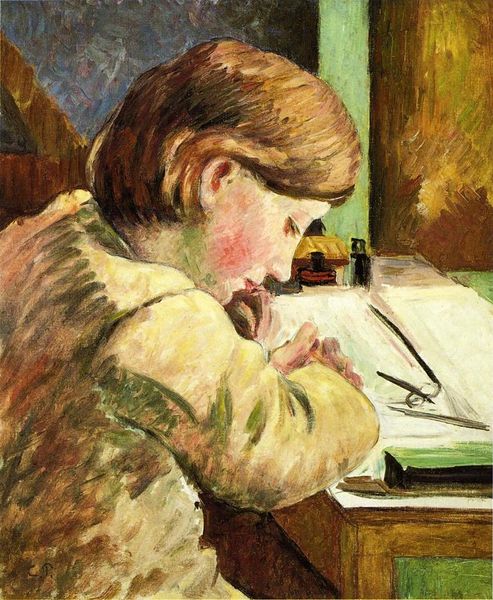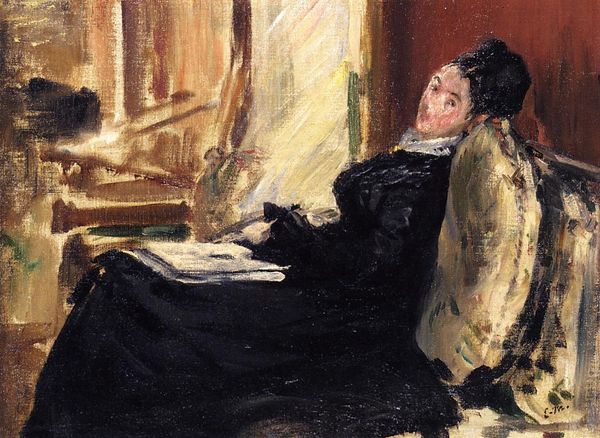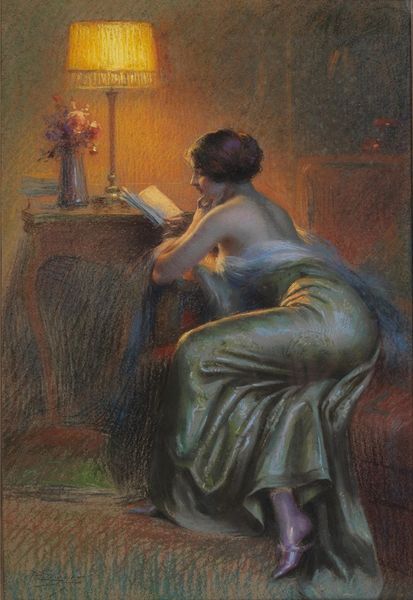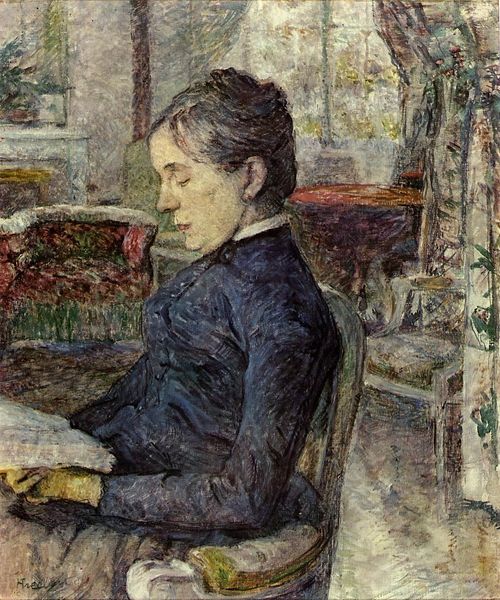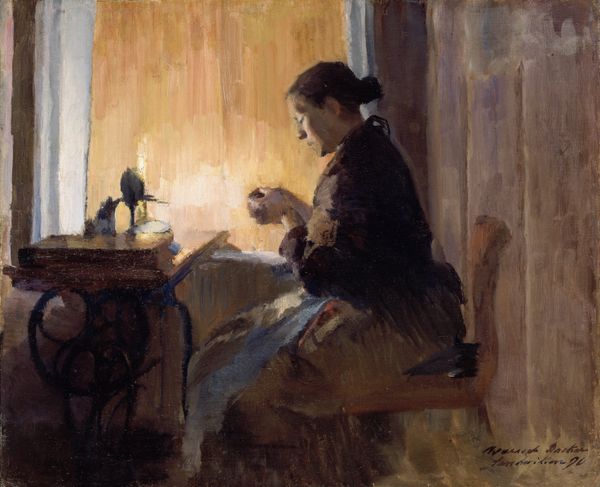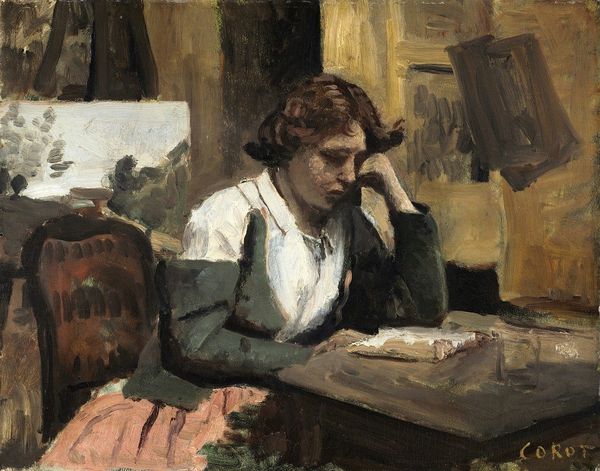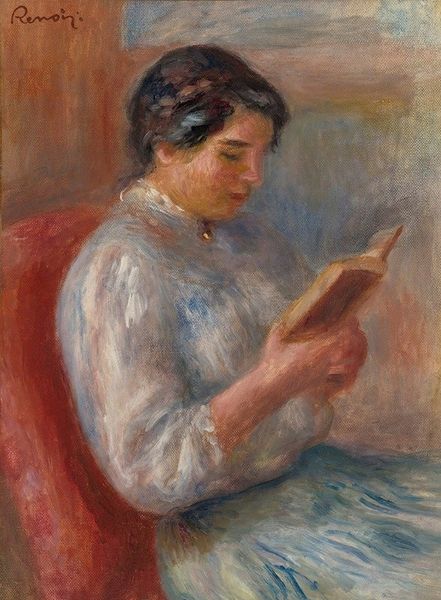
Copyright: Public domain
Curator: Let's discuss Renoir's "Posthumous Portrait of Frederic Bazille," an oil on canvas he completed in 1885. Editor: The mood is instantly contemplative, isn't it? There's a subdued, almost melancholic tone. It looks like Renoir captured a moment of intense concentration; he’s seated, presumably writing or reading, hunched over his desk. Curator: Indeed. Bazille had tragically died in the Franco-Prussian War. Renoir painted this years later, a poignant act of remembrance common in that era when many families coped with conflict and lost ones. Its existence reveals the power of memory and the function of portraiture in mediating grief and enshrining individuals in cultural memory. Editor: Thinking about the physicality of this artwork—notice how Renoir's application of paint in this portrait gives the sitter's jacket texture that seems almost palpable? This way of creating portraits was the trademark style of that era's masters, which suggests Renoir saw the jacket as an object central to Bazille's presence. Curator: Absolutely. Renoir also engaged with Impressionism, although perhaps toned down here. Look at the dappled background; it recalls those sun-drenched landscapes. How does the brushwork play into constructing Bazille’s legacy as an artist? Editor: I would say that Renoir made sure that his identity remained intact as an artist, that he's remembered for his craft, which is the means of making his memories and vision possible, accessible to everyone. This technique serves to solidify Bazille's existence not just in the memories of loved ones but also within a larger art ecosystem. Curator: I see what you mean. Renoir transformed individual memory into a broader, shared cultural symbol, and the work reveals so much about the artistic relationships and socio-political currents of 19th-century France. Editor: And that brings me back to thinking about Renoir himself—how this became not just a symbol of memory but also of art production within a complicated context. Curator: This look at the social and material elements certainly illuminates what's behind the brushstrokes, doesn't it? Editor: Absolutely, an ode not just to a person but the material things that gave a soul meaning!
Comments
No comments
Be the first to comment and join the conversation on the ultimate creative platform.
